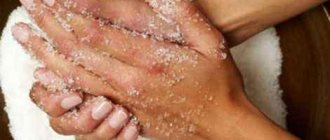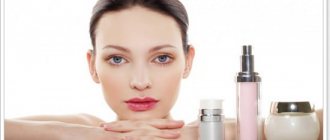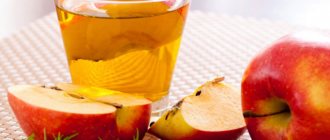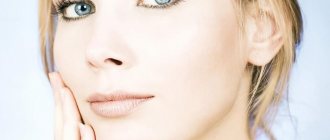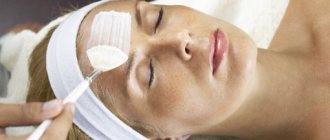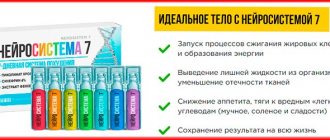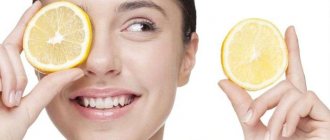When choosing the best option for cleansing and rejuvenating facial skin, it is necessary to take into account such an important factor as the seasonality of the procedure. Contrary to the fears of some salon visitors who believe that facial peeling can only be done in winter or late autumn, there are sessions that can be performed all year round.
Even such manipulations have been developed that are recommended to be carried out in spring and summer to prepare the skin for an even and beautiful tan. To figure out when to peel and when to postpone it, you need to pay attention to the composition of the drugs used and their therapeutic effect.
Features of the procedure
Chemical peeling with acids does not require prior preparation. The procedure takes 30-40 minutes and is carried out according to the following protocol:
- cleansing the face and neck;
- application of the active substance;
- keeping the composition for 2-10 minutes;
- applying a neutralizer that stops the peeling;
- removal of composition;
- applying post-peeling cream.
The advantage of the procedure is its comfort. A slight tingling sensation may be felt, which goes away after applying the neutralizer. In case of increased sensitivity, the operating time of the composition is reduced. After the procedure, slight redness is possible, which quickly disappears.
There are practically no contraindications to the procedure.
Despite the fact that facial peeling with fruit acids is carried out to reduce hyperpigmentation, it cannot be done on tanned skin. This can lead to even more pigmentation and the appearance of numerous dark spots on the face. If the skin is tanned, it needs to be given time to recover. Therefore, cosmetologists recommend starting the fight against excessive tanning not at the end of summer, but a couple of months after the end of the active sun season.
Why does skin need peeling?
Peeling promotes skin renewal and regeneration. After it, the face looks younger and fresher. Peels have an antioxidant effect and enhance the synthesis of collagen and elastic fibers, glycosaminoglycans and ceramides. The skin acquires a uniform shade, and cosmetics adhere much better. If the natural process of exfoliation of dead cells is disrupted, the epidermis ages and renews itself more slowly.
Facial peeling allows you to get rid of many aesthetic problems:
- dark spots;
- freckles;
- small scars;
- acne;
- superficial wrinkles.
In a salon, a deeper cleansing of the facial surface is done, which is almost impossible to achieve at home. Therefore, if you have pronounced aesthetic problems, it is better to contact a trusted beauty salon.
Types of peeling
Any woman can choose one or another type of peeling, depending on her age and individual characteristics. When choosing a specific type of procedure, it is better to consult a specialist. He will recommend one or another frequency of peeling. Some types can be done at home, while others can only be done in a salon.
There are many peeling recipes for self-use. They are prepared from crushed egg shells, salt or bran, as well as auxiliary ingredients - cottage cheese, honey or olive oil. The procedures improve metabolism and blood circulation. Even at home, you can help your skin look healthier.
To ensure the most effective results, peeling is best done in a beauty salon using special equipment and preparations. Let's look at some of its types.
Mechanical interior
The mechanical type of procedure has the following varieties:
- brossage - carried out using rotating brushes. This procedure does not cause pain; if you have oily skin, it can be performed no more than once a week; if your skin is dry, then no more than once a month;
- medium peeling - parts of aluminum hydroxide act on the skin, thanks to which the skin is smoothed and cleansed;
- deep - performed using anesthesia. For this purpose, discs are used to remove scars and wrinkles. However, as a result of the procedure, swelling and redness may form, which are eliminated through restorative measures;
- vacuum - in this case ultrasonic action occurs. During the procedure, all dead cells are removed, clogged pores are opened, acne and comedones disappear.
Chemical and physical
Chemical peeling is carried out using various organic acids. They act on dead skin cells and burn them out. The following acids are mainly used for superficial chemical peeling:
- wine;
- fruity;
- dairy;
- lemon
Peeling based on glycolic acid is also popular.
Physical peeling is less popular. It is performed using a cold burn using liquid nitrogen or dry ice. When the temperature is very low, a lot of collagen is released, skin cells are restored, and blood circulation improves. The skin receives sufficient nutrition. The procedure is quite short (takes from 5 to 30 seconds). It is recommended to do it about 7 times a month.
Preparations for the procedure
Chemical peeling of the facial skin is carried out with acids. They affect the surface with different intensities:
Products based on hydroxy acids. These are all fruity and glycolic, providing a gentle effect on the skin. They belong to the category of alpha hydroxy acids. Fruit and glycolic peelings help nourish the skin with moisture, so they are more suitable for extreme dryness. Beta-hydroxy acids also belong to this group.
These substances penetrate deeper into the skin, therefore they are able to regulate the functioning of the sebaceous glands, more energetically stimulate the rejuvenating processes in it, and cleanse it carefully but efficiently. The most commonly used drug is salicylic acid. Alpha and beta hydroxy acids are found in the preparations Jan Marini, MD Forte, Cosmedix, Agera RX, LA Peel.
- Products whose main component is trichloroacetic acid. It comes in different concentrations, so there are preparations for medium and deep peels. In the first case, 25 - 30% substance is used. For a deep effect, a concentration of 40% is required. This series includes the drugs “Skintech Peel”, “Compositum”, “Obagi Blue Peel”, “Cosmedix”.
- Products with retinoic acid. Designed for so-called yellow peeling. The preparations also contain ascorbic, phytic, azelaic acids, and vitamin C. In beauty salons they use Mediderma products.
- Products containing phenol (carbolic acid). They also come in different concentrations, so they are used for medium or deep effects. These are drugs “MC Peel”, “Green mask”, etc.
When is the best time to exfoliate your face?
- The first skin problems appear during puberty. In the period from 13 to 20 years, the body produces large quantities of androgens - sex hormones that affect the composition and amount of sebum. Particles of the epidermis enter the pores, mix with fatty acids and form sebaceous plugs - blackheads and blackheads. Ultrasonic cleaning and gentle acid peeling are recommended for teenagers. Cleaning with ultrasonic waves will clean the duct of the sebaceous glands, and acids will dissolve dead scales.
- After 30 years, less collagen is produced in the epidermis, and blood flow worsens. Fat is also released less intensely. The purpose of peeling at this stage is to stimulate regeneration.
- After 40 years, the epidermis renews itself 2 times slower than at a young age. Facial skin becomes rough to the touch and dull in appearance. Women of this age are offered aggressive deep peeling and dermabrasion.
Peeling of any degree of aggressiveness damages the protective layer. This means that the epidermis becomes defenseless against ultraviolet radiation, cold, wind and pathogenic bacteria. For this reason, it is recommended to cleanse your face in the intermediate seasons: autumn and spring.
Even if the sun is inactive, during the post-peeling period, before going out, apply a product with SPF. If Sanskrin is physical (contains titanium dioxide), it can be applied immediately before going out. Apply chemical sunscreens to the skin 30 minutes before going out.
Types of rollers and features of their use
Now there are a large number of facial exfoliations to choose the perfect roll. They are distinguished:
- By content (acids, fruit enzymes, egg white);
- Consistency (cream, gel, liquid);
- To the manufacturer;
- Depends on the skin (they are mostly universal).
There are moisturizing (Nu Skin Polishing Peel), soothing (librederm Hebral Care), anti-inflammatory (Tony Moly Peeling Me Aqua Moisture), for color (Secret Key Lemon Srarkling), anti-aging (Deoproce Green Tea).
Korea is known for its natural facial products.
Top 10 peeling rolls from Korea:
- A'PIEU Naked Peeling Gel Diamond;
- Mizon Apple Smoothie Peeling;
- Skinfood Pineapple Peeling;
- Holika Gudetama Smooth Egg Skin;
- Echoice with fermented soybean extract;
- A'pieu with apple;
- Advanced B5 Hydratio;
- Tony Moly Appletox Smooth;
- SUPER AQUA Oxygen;
- Mangowhite peeling gel.
Usage reminder:
- Before applying the product, you need to cleanse your face and steam it.
- After application, the mask is massaged, removing pellets from dead skin.
- After the procedure, if you need to go outside, apply cream.
- You cannot immediately use a towel after exfoliation, otherwise the epidermis will be damaged.
- The mask is not applied around the eyes and lips.
- In case of severe burning and itching, everything is quickly washed off.
With calcium chloride
You will need calcium chloride 5% and baby cream or soap.
- Lather your face with soap or apply a layer of cream.
- Calcium chloride is then applied using a cotton swab.
- Wash off the mask when lumps begin to appear.
- Moisturize your skin.
With a creamy consistency
The face cream roller is easy to use. It performs an abrasive function, giving a healthy shine. It also delicately cleanses the skin without causing irritation or inflammation. The skin will be silky and elastic, oxygen and nutrients are better supplied to the epidermis.
The cream has a moisturizing property, which then makes the use of cosmetics effective. It also has a restorative effect and controls sebum secretion.
Its use is convenient: apply the consistency and massage lightly. Then rinse with water and apply a moisturizing mask.
Bubble Cleaning Rolls
Bubble rolling for the face is one of the pleasant procedures. This is an unusual product for gentle skin cleansing. Its texture consists of thousands of bubbles that are filled with oxygen, which is necessary for the epidermis.
Before applying the mask, moisturize the skin. Gradually, the foam turns into a gel, which forms pellets, removing impurities and dead skin. Also, unlike other peels, it can be applied simply with clean hands.
The face roll moisturizes and soothes the skin if it contains herbal ingredients and tea tree oil. The gel copes well with various inflammatory processes and slows down the elimination thanks to antioxidants.
How to make at home: recipes from fruits and berries
Before peeling with fruit acids, the following preparation is required:
- two days before the session, it is advisable to avoid sunbathing and activities that could cause injury to the skin;
- Immediately before the procedure, you need to cleanse your face, steam it a little, or just take a shower or bath.
The cosmetic mass of fruits is applied only to dry skin, avoiding the area around the eyes, and then left for the prescribed time. Wash off with water at a pleasant temperature.
After the session you need:
- wipe the skin with tonic;
- lubricate it with a moisturizing or nourishing cream;
- Avoid sun exposure for three hours to prevent the appearance of age spots.
When preparing cosmetic mixtures for exfoliation, the following components can be added to fruit puree:
- honey, which draws out toxic metabolic products from the epidermis;
- sugar, which regulates water balance;
- cosmetic clay (green or pink) and various oils (for dry type);
- starch (preferably potato starch).
What and how to make fruit peeling at home:
Pineapple
For the fatty type, it is enough to grind 100 g of pineapple into a puree. This fruit intensively exfoliates the upper layer of the epidermis, tightens pores, and launches rejuvenation processes.
For normal, you can add 10 g of candied honey and 5 g of potato starch to the puree. With this mixture you can get rid of blackheads in two sessions and slightly tighten the oval of your face.
Most berries have antioxidant properties, protecting the skin from the harmful effects of free radicals. Strawberries are best suited for peeling.
It can be replaced by raspberries and red currants. Berries can be used individually or mixed in equal proportions.
To conduct an exfoliation session you will need:
- 80-100 g berry puree;
- 10 g green clay.
After mixing, immediately apply to face, leaving to dry for 20 minutes. The recipe is suitable for oily and combination skin.
During the procedure, tingling is possible, and after removal there may be redness. This is due to the high concentration of fruit acids in berries, which have a whitening effect.
Whitening peeling mask made from strawberries, honey and olive oil:
Malic acid is the strongest of all AHAs. It penetrates into the deep layers of the epidermis, activating its rejuvenation and cleansing.
For oily and combination skin, apples are used raw for peeling, and for normal and dry skin, apples are used baked or boiled in milk.
To prepare you need:
- 100 g applesauce;
- 10 g sugar.
This mixture effectively exfoliates, moisturizes, smoothing out fine wrinkles.
If the skin is dry, then it is advisable to add 5 ml of peach oil to the mixture. The duration of the procedure for dry type is 15 minutes, for all others - 30 minutes.
Apple peeling, video recipe:
Multifruit
It is more convenient to use freshly squeezed juices:
- from sour grapes - 5 ml;
- from mature - 10 ml;
- apple - 5 ml;
- lemon - 5 ml;
- pineapple - 10 ml.
Exposure time from 15 (for dry) to 40 minutes. (for all other types).
A multi-fruit exfoliant that is both delicate and intense in its cleansing effect of dead cells.
How often can I do it?
Having received an excellent effect, the patient, wanting to enhance the effect, can insist on daily exfoliation.
The more aggressive the exfoliation method, the more time you need to give the skin to recover. Otherwise, you can affect not only dead particles of the dermis, but also healthy epithelium. The skin will be left without natural protection, and the chance of getting the opposite effect will increase.
- Light, superficial peelings at home can be done 1-2 times every 10 days, taking into account the characteristics of the skin.
- Combination skin – 1 time per week, course of 4 procedures.
- Dry skin – once every 2 weeks, course of 6 procedures.
- Normal skin – once every 4 days, course of 10–12 procedures.
- Oily skin – 2 times a week, course of 8–10 procedures.
- For more serious manipulations with the skin, it is important to consult a cosmetologist. Carry out the frequency of procedures in a course recommended by a specialist.
What is fruit facial peeling?
The name of the presented manipulation comes from the English verb to peel - to sand, scrape. Fruit acids for peeling and regeneration have the mildest effect, so they do not harm even sensitive, dry and allergic skin. This exfoliation carefully removes unnecessary epidermis, deeply cleanses pores, stimulates cell regeneration and elastin production.
Fruit peeling is an effective procedure for improving the appearance of the face and normalizing the activity of the sebaceous glands. With long-term regular use of exfoliates (alpha hydroxy acids or AHAs), they help get rid of age spots, post-acne and comedones, and significantly even out skin texture and tone. One of the advantages of manipulation is safety and the ability to perform sessions at home.
How does fruit peeling work?
According to the mechanism of action, the procedure in question is a chemical burn of the skin, the depth of which is carefully controlled. Fruit facial peeling contains acids that dissolve dead cells, sebaceous gland secretions and dirt in the pores. The improvement in the appearance of the skin is noticeable after the first manipulation. For sustainable results, a course of cosmetic therapy will be required - from 4 sessions (the number depends on the condition and needs of the epidermis) with breaks of 7-10 days.
When is the best time to do fruit peeling?
Due to the removal of the surface layer of the skin, it becomes more susceptible to negative environmental factors. For this reason, facial peeling with fruit acids is recommended to be performed during periods of low solar activity, optimally from autumn to spring. Otherwise, the risk of the formation of persistent pigment spots increases against the background of increased melanin production under the influence of ultraviolet radiation
If fruit peeling cannot be postponed and manipulations have to be carried out in the summer, it is important to protect the epidermis. Special creams with SPF of at least 30 units are suitable for this.
How often can you do fruit peeling?
The concentration of drugs to be applied, the duration of their effect and the frequency of procedures are determined individually. Facial cleansing with fruit acids is a superficial peeling, but if used incorrectly it can be harmful and cause a deep chemical burn. This is fraught with dangerous complications, damage to blood vessels and the formation of scars.
Girls with normal skin without pronounced defects are recommended to exfoliate 1-2 times a year. If the epidermis is prone to oiliness, there are multiple imperfections (comedones, post-acne, pigmentation, scars and others), it is advisable to perform fruit acid peeling more often. The nuances of the course of treatment should be determined by an experienced cosmetologist. Some women require 5-8 sessions 2-3 times a year, in other cases up to 11 treatments are needed.
Fruit peeling – contraindications
There are conditions under which exfoliation cannot be done only at a specific moment and must be rescheduled. Fruit peeling has the following relative contraindications:
- fresh tan;
- period of high solar activity;
- exacerbation of herpes;
- mechanical damage to the skin (abrasions, scratches, wounds);
- inflammation in the area where the drug is applied;
- pregnancy;
- breast-feeding;
- use of photosensitizing medications or cosmetics.
Sometimes peeling based on fruit acids is strictly prohibited:
- intolerance to the components of the drug, allergies;
- rosacea;
- diabetes;
- severe blood diseases;
- skin tendency to scarring and pigmentation when damaged;
- chronic dermatological pathologies;
- serious somatic diseases;
- hirsutism;
- neoplasms of any quality.
Table 2. Is it possible to do peeling in such cases?
| Situation, event, health condition | Is it possible | What to consider |
| Is it possible to peel for pimples and acne? | Yes, selectively, subject to certain conditions | You must first identify the cause that provokes the appearance of acne and pimples. It is recommended to exfoliate after the acne has cleared. You can perform superficial peels for acne. In the presence of inflammation, ulcers and wounds, peeling is not performed. Superficial and medium peeling can be carried out in the presence of blackheads and comedones. |
| Is it possible to do facial peeling during pregnancy and breastfeeding? | Yes, some types of peelings can be used | During pregnancy and breastfeeding, the following are contraindicated: deep peeling, superficial and medium chemical peeling. Since hormonal levels change during pregnancy, chemicals can cause persistent pigmentation. During lactation, deep and medium peels are prohibited. You can do: light (superficial) physical peeling, peelings using natural products. |
| Is it possible to exfoliate after cleansing? | Undesirable | After cleansing, the skin is injured, and unwanted allergic reactions, severe redness, and rashes may occur. After cleansing, peeling can be done only after complete restoration of the skin, depending on the skin type, after a maximum of 2-3 weeks. |
| Is it possible to do peeling for rosacea? | Yes, some types of peelings can be done | The use of deep and aggressive peels is not recommended. Peels that do not cause severe irritation and are hypoallergenic are suitable for use: almond, milk, lactobionic. Hardware peelings are shown: oxygen, gas-liquid, aqua peeling. Possible use: retinoic peeling, peeling with azelaic acid, phytin peeling, coral peeling. |
| Is it possible to peel if you have sensitive skin? | Yes, some types of peelings can be done | This type of skin is more susceptible to peeling than other types. It is recommended to do superficial peelings. Since the skin reacts to the slightest influence, you should correctly select which procedure is best and does not injure the skin. Acid surface peels can be used. If you want to carry out the procedure at home, you should first consult a cosmetologist. |
| Is it possible to do facial peeling with demodicosis? | Yes, some types of peelings are recommended to improve skin condition | For demodicosis, the use of: laser peeling, chemical peeling with glycolic acid, chemical peeling with triacetic acid is indicated. Chemical peels with acids for demodicosis help improve the condition of the skin, have anti-inflammatory and bactericidal properties that promote healing. Laser peeling affects the skin, promotes healing and renewal of damaged skin areas. |
| Is it possible to do peeling during menstruation, before menstruation? | Contraindicated | During your period, it is best to refrain from peeling procedures. These days, a woman's hormonal background changes; the reaction to peelings is difficult to predict. The restructuring of the body begins a few days before the start of menstruation, so the time immediately before menstruation is also not suitable for peeling. |
| Is it possible to do peeling while taking hormonal hormones? | Yes, but subject to conditions | If you are taking hormonal medications, you should visit your doctor and get advice before undergoing the procedure. Depending on what disease is present and what products the doctor prescribed, some types of peels may be contraindicated. |
| Is it possible to do peeling before/after mesotherapy? | Yes | Peels are recommended to be carried out before mesotherapy. In this combination of peeling and meso, mesotherapy promotes rapid restoration of the skin after peeling. After a mesotherapy session, superficial peelings can be performed. |
| Is it possible to peel after Botox? | Yes | Botox and chemical peeling procedures go well together. Superficial peeling with acids is compatible with both procedures on the same day. For a stronger effect of peeling, after administering botulinum toxin, cosmetologists advise waiting a month. |
| Is it possible to do peeling after biorevitalization? | Yes | It is recommended to combine these two procedures together to enhance the rejuvenation effect. |
| Is it possible to peel after fillers? | No | After the introduction of fillers, peelings cannot be used for two weeks. It is necessary to wait until the skin at the injection sites heals. After healing for 1-2 months, only light peelings are applicable. Medium-impact peeling can be used only after consultation with a cosmetologist, since everything depends on the condition of the skin. |
| Is it possible to exfoliate after sunbathing? | Yes, some types of peeling | It is recommended to carry out superficial peeling to restore rough skin after tanning. |
| Is it possible to peel after Dysport? | Yes | A month after using Dysport, you can do laser and chemical peeling. |
| Is it possible to peel after threads or mesothreads? | Yes | You can do peelings after 2 – 2.5 months. |
| Is it possible to peel before/before eyebrow tattooing? | No | Peeling in the eyebrow area is not recommended 10 days before and after tattooing. Exposing tattooed skin to acids can affect the color of the tattoo. |
| Is it possible to do peeling before/after plasma lifting? | Yes | These two procedures are recommended to be carried out in combination to enhance the rejuvenation effect. Plasmolifting after peeling will improve the condition of the skin and enhance the rejuvenation effect. |
| Is it possible to do peeling after or before solarium? | Deep peeling: before the procedure, you should avoid sunbathing a month before the procedure; After completing rehabilitation from tanning, visiting a bathhouse or sauna, you should abstain for at least 6 months. Medium peeling: It is not recommended to perform peels immediately after active tanning. This can harm sun-weakened skin. Peeling can be done after 10-14 days; When conducting a peeling course, it is highly undesirable to sunbathe between sessions; After peeling, you should refrain from sunbathing for 2 weeks. Light types of superficial peeling are recommended before tanning, such as salt peeling. | |
| Is it possible to peel after hyaluronic acid? | Yes | It is recommended to carry out these 2 procedures alternately in order to enhance the rejuvenation effect. |
| Is it possible to peel after microblading? | Yes, but after time | After microblading, peeling is possible after 2-3 months, since the skin in the eyebrow area is highly susceptible to injury. It is recommended not to apply products close to the eyebrows when peeling. |
| Is it possible to peel after a scrub? | Yes, but after time | After the scrub, the use of peeling is strictly not recommended. The scrub contains abrasive particles, after exposure to which microtraumas remain on the skin. Subsequent peeling may have a negative impact. Scrubs are prohibited before deep and medium peels. |
| Is it possible to peel after removing a mole? | No | It is not advisable to do peeling after removing moles. Superficial peeling can be carried out 2-3 months after removal. |
| Is it possible to peel after sugaring? | Yes | It is recommended to use peelings before and after sugaring. Peeling improves the condition of the skin; with this combination of peeling and sugaring, the number of ingrown hairs is significantly reduced. |
| Is it possible to do peeling after lip augmentation? | Yes, as time goes by | Peels can be used two weeks after lip augmentation. |
| Is it possible to peel after laser resurfacing? | No | The rehabilitation period after the procedure can last up to a year. During this period, it is necessary to exclude the use of any peelings. |
| Is it possible to peel after mechanical cleaning? | Yes, recommended over time | Superficial peeling is recommended a week after mechanical cleaning. A deeper peeling effect is applicable after 3-4 weeks. |
| Is it possible to do peeling immediately after tooth extraction? | No | After tooth extraction, cosmetic procedures should be postponed for 5-7 days. Exposure to facial skin, especially physical skin, is highly undesirable. |
| Is it possible to do peeling after 50 years? | Yes | Peelings are recommended. Deep to remove age-related pigmentation, fine wrinkles, and generally improve skin tone. Medium peeling to maintain skin tone. Since the skin becomes thinner with age, it is not recommended to overuse peeling. Superficial peelings at this age are ineffective. |
Chemical peeling of the face - what is it?
Chemical peeling is a salon procedure in which the outer epidermal layer, including dead cells, is removed. Cleaning is carried out using intensive chemicals.
The result is discoloration or removal of pigment formations, elimination of defects, smoothing of the skin surface, formation of an even and pleasant skin tone.
Chemical peeling - what is it: essentially renewing the epidermis by burning it. But there is no need to worry: the cosmetologist keeps the depth of the burning effect of the drug under control.
In burned skin tissues, the regeneration process of active synthesis of collagen and elastin fibers is launched. The result is renewal and rejuvenation of the skin, disappearance of cosmetic problems.
Stages of the session:
- The patient's skin is cleansed of impurities and makeup. The areas of the face to which the drug will be applied are degreased.
- The master dips the brush into the preparation and removes excess liquid so that it does not get into the patient’s eyes.
- The drug is carefully applied with a brush to the skin. The application time is determined by the age characteristics and physical condition of the skin, but usually lasts half an hour.
- Treatment is carried out from top to bottom: from the forehead to the nose, cheekbones, chin. Mostly, the areas of bends and many wrinkles are carefully treated. During application, the patient may feel a slight tingling sensation.
- The drug is left on the face for a time determined by the cosmetologist.
- The final stage of chemical peeling is removing the composition and applying soothing, protective and restorative masks.
Patients should understand that the result will be noticeable after a chemical peel only when the skin can be restored. After the procedure, more or less pronounced side effects may occur due to the aggressive effects of chemicals. The most common symptoms observed after chemical peeling are:
- red spots;
- swelling;
- irritation;
- intense itching;
- blisters;
- herpetic rash.
Chemical peeling is done only by an experienced professional in a beauty salon or clinic. You should not clean your skin with aggressive preparations yourself: the consequences of home chemical peeling of the face will be extremely unpleasant.
The cost of the session is determined by the intensity of the cleaning. Thus, in Moscow, the price of professional superficial chemical peels ranges from 800 to 1000 rubles, medium-intensity cleansing costs 3–4 thousand rubles, and for deep cleansing of the skin you will have to pay 6–10 thousand.
Chemical peeling preparations are selected taking into account contraindications and personal characteristics of the skin. The component composition is based on the following acids:
- fruity (AHA);
- hydroxy acids (BHA);
- other organic acids and their combinations (retinoic, mandelic, grape and others).
Fruit, or so-called AHA, acids include lactic, citric, and malic. They accelerate exfoliation of the outer layer of the epidermis, make skin moisturizing more effective, have an antioxidant effect, and destroy pathogenic microflora that provoke dermatological diseases.
BHAs differ from AHAs in that they are fat soluble but not water soluble. This peeling is the best option for oily skin.
Hydroxy acids are practically no different in action from fruit acids, but they also affect the functioning of the sebaceous glands. The synthesized sebum softens and comes out of the pores more easily, due to which the face after chemical peeling is freed from acne, pimples, and comedones. The most commonly used BHA compounds are salicylic and glycolic acids.
The action of retinoic and other types of acids is basically similar to the action of AHA and BHA compounds. But these drugs also suppress the work of melanocytes, block the synthesis of the enzyme tyrosinase, which is involved in the formation of melanin, which affects the appearance of the face.
Peeling additionally gives a whitening effect, eliminates excess pigmentation, and is recommended for patients with acne, traces of rashes, and rosacea.
Contraindications and possible complications
Like any other intensive salon procedure, laser peeling has its contraindications and possible complications. These nuances must be taken into account when visiting a cosmetologist.
In the following cases, laser peeling is strictly contraindicated:
- pregnancy and breastfeeding;
- any blood diseases;
- exacerbation of skin diseases;
- epilepsy;
- the presence of subcutaneous fillers;
- chronic diseases (for example, diabetes);
- oncological diseases;
- tendency to form colloidal scars;
- poor blood clotting;
- taking oral contraceptives and retinoids;
- intolerance to anesthesia;
- pustular rashes, unhealed skin lesions, excessive pigmentation;
- increased body temperature and inflammatory processes.
Important! Before chemical peeling, you will have to undergo a full medical examination to exclude all possible contraindications.
If, however, the laser procedure was performed without taking into account medical indications or skin care during the rehabilitation period was incorrect, then some complications may arise.
Peeling principle
In an acid peel, a chemical solution is applied to the dermis and left there for a while to be absorbed. Over the next 1 to 14 days, depending on how deeply the substances penetrate the skin, the dermis begins to peel off greatly. This procedure removes areas of skin in a controlled manner so that rapid regeneration occurs in the desired areas. The acids that are used are often called corrosives.
Acid peeling can be superficial or medium depending on how deep it needs to penetrate into the pores. Factors that may affect penetration depth include:
- acid concentration in the peeling agent;
- number of layers that are applied;
- time period for acid neutralization.
Based on these indicators, the following types of peeling can be distinguished:
- Superficial peeling. A mild type of acid scrub, can be used on all skin types. Superficial peeling is usually a liquid that contains a certain percentage of glycolic acid, and sometimes solid carbon dioxide is also used.
- Medium peeling penetrates the skin more deeply than superficial peeling and causes second-degree burns. Trichloroacetic acid is the main component of the product; it is used in both medium and deep methods. The main characteristic is the formation of a hard crust on the face.
- Deep peeling penetrates several layers of skin and causes second-degree burns; this acid method can be used for legs and very problematic facial skin. Usually the main component is phenol. This technique cannot be used on dark skin types because it is mainly recommended for whitening the face.
Video: acid peeling procedure https://www.youtube.com/watch?v=zby0mHu0JaU
Glycolic peeling
Glycolic Acid is perhaps the most popular and best known among alpha hydroxy acids.
Firstly, glycolic acid has a small molecule size, it is very tiny - only 76 Daltons, thanks to which it penetrates the skin easily and deeply.
Secondly, glycolic peels have a wide spectrum of action:
- even out the relief, make the skin smooth,
- stimulate the synthesis of collagen and hyaluronic acid, which helps increase skin elasticity and smooth out wrinkles,
- reduce sebum secretion,
- help cleanse pores and eliminate blackheads.
Thanks to such versatile properties, peelings with glycolic acid can be used to solve aesthetic problems of both aged and young skin.
However... Despite their wonderful properties, glycolic peels are not suitable for everyone. For those with sensitive skin with rosacea and couperose, glycolic acid can cause severe redness, prolonged inflammation and excessive flaking.
As a result, instead of the listed positive effects, owners of such skin may experience persistent redness, dehydration, hypersensitivity and more pronounced rosacea.
Therefore, I advise such people to pay attention to the following two acids
The principle of action and effectiveness of fruit peeling
Facial peeling with fruit acids is not a newfangled cosmetic procedure. It was used in Ancient Egypt and Rome. Then, of course, only apple and lemon juices were used. Nowadays, much more fruit acids are used, and cosmetic products based on them do an excellent job of their tasks.
Many people are interested in what happens as a result of this procedure and what fruit peeling gives. Acids act in a complex manner and have a range of effects. The process of cell division in the dermis is activated. Next, the processes of renewal of the skin structure are launched, and a fresh appearance returns. The relief of the face is evened out, the skin color becomes healthy. The active substances of the cosmetic product cleanse the ducts of the sebaceous glands and regulate the oiliness of the skin. Due to this, the number of rashes decreases. And finally, fruit acids activate skin fibroblasts, which play an important role in the production of collagen, a substance responsible for maintaining skin firmness and elasticity.
Recipes for fruit compositions may vary. Various types of acids are used to carry out the peeling procedure:
- Dairy – obtained from apples, blueberries, grapes, tomatoes and maple syrup. The main actions of this acid are that fruit peeling moisturizes tissues and whitens the skin surface.
- Wine - extracted from ripe grapes aged in wine, as well as from oranges. It has several effects - moisturizes, whitens and exfoliates.
- Glycolic acid – found in green grapes. It is used to quickly obtain an effect in the form of eliminating age spots.
- Apple - found in apples and tomatoes. Excellent for starting regeneration processes in the skin structure and exfoliating the stratum corneum.
- Lemon - extracted from citrus fruits. This fruit acid is a good antioxidant, perfectly brightens the skin and disinfects tissues.
